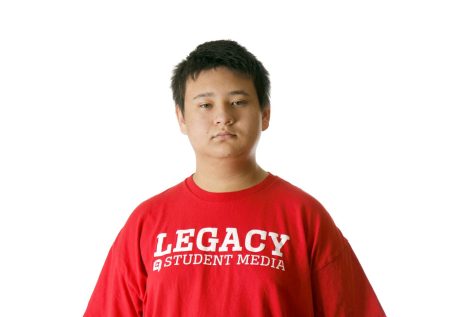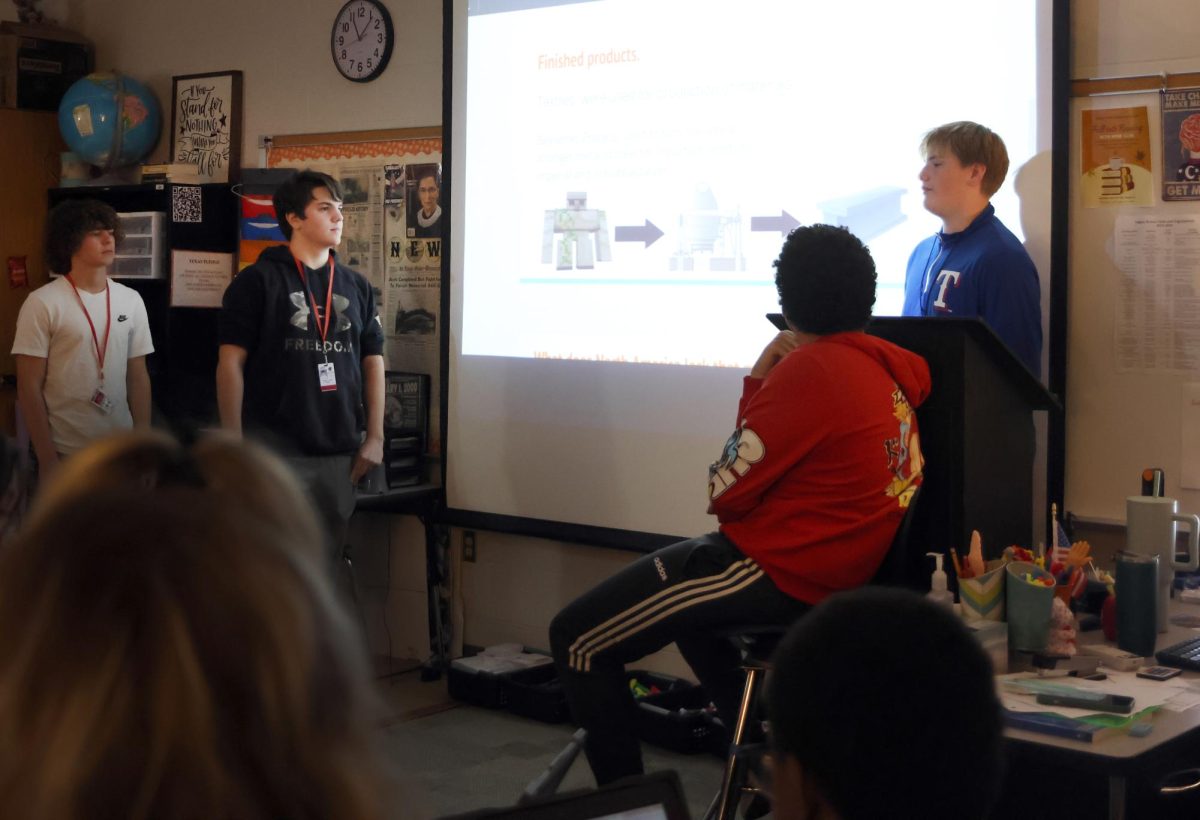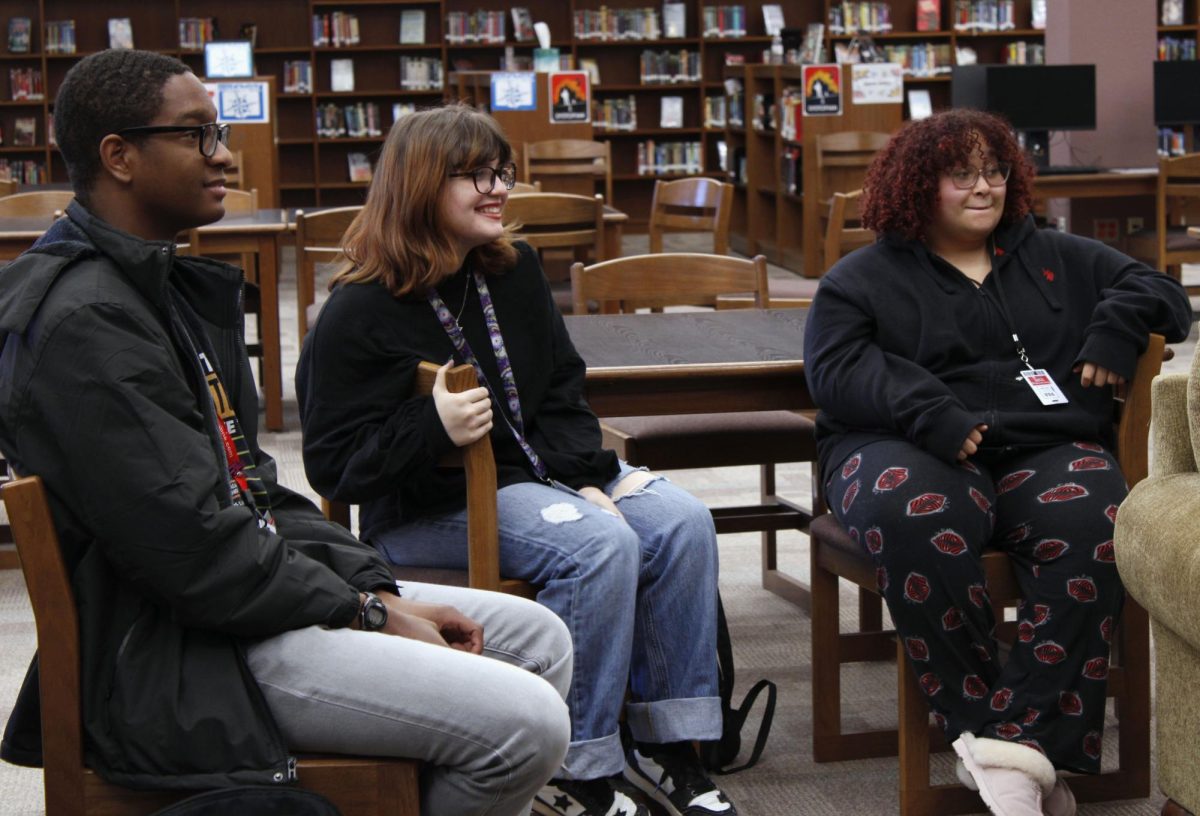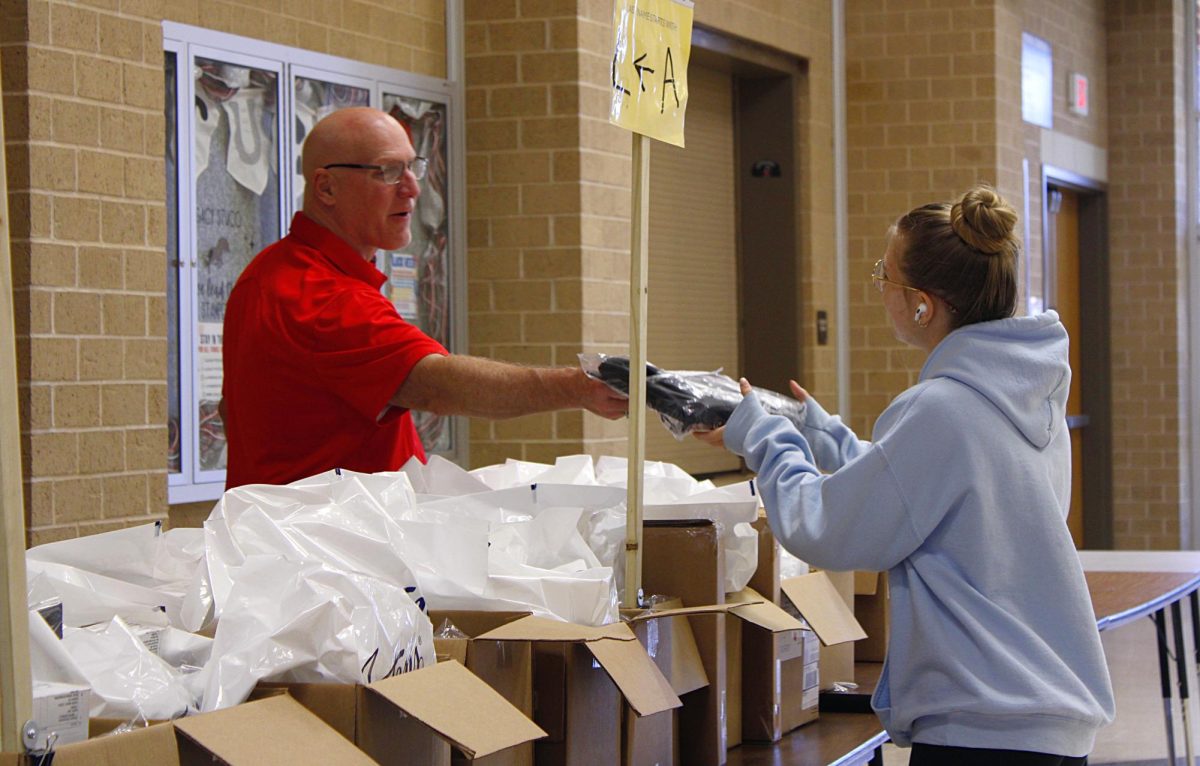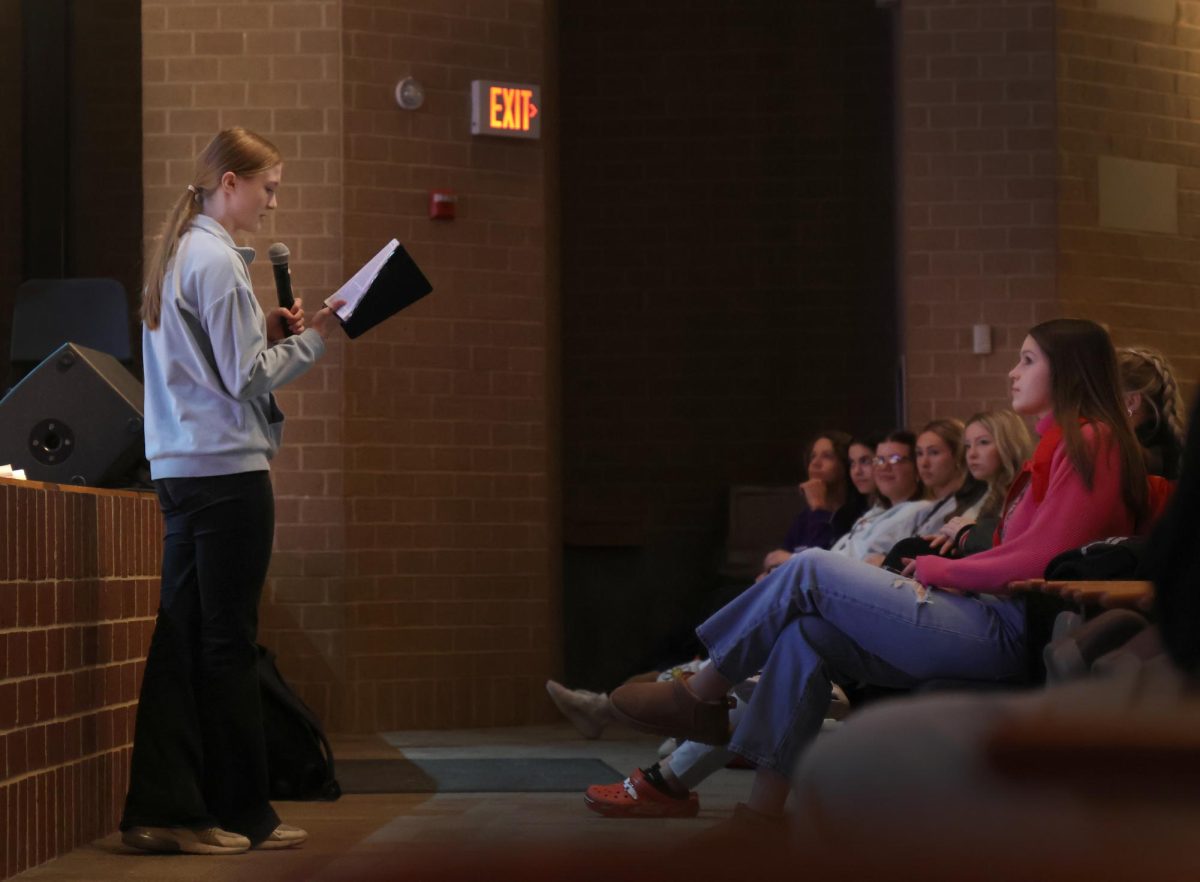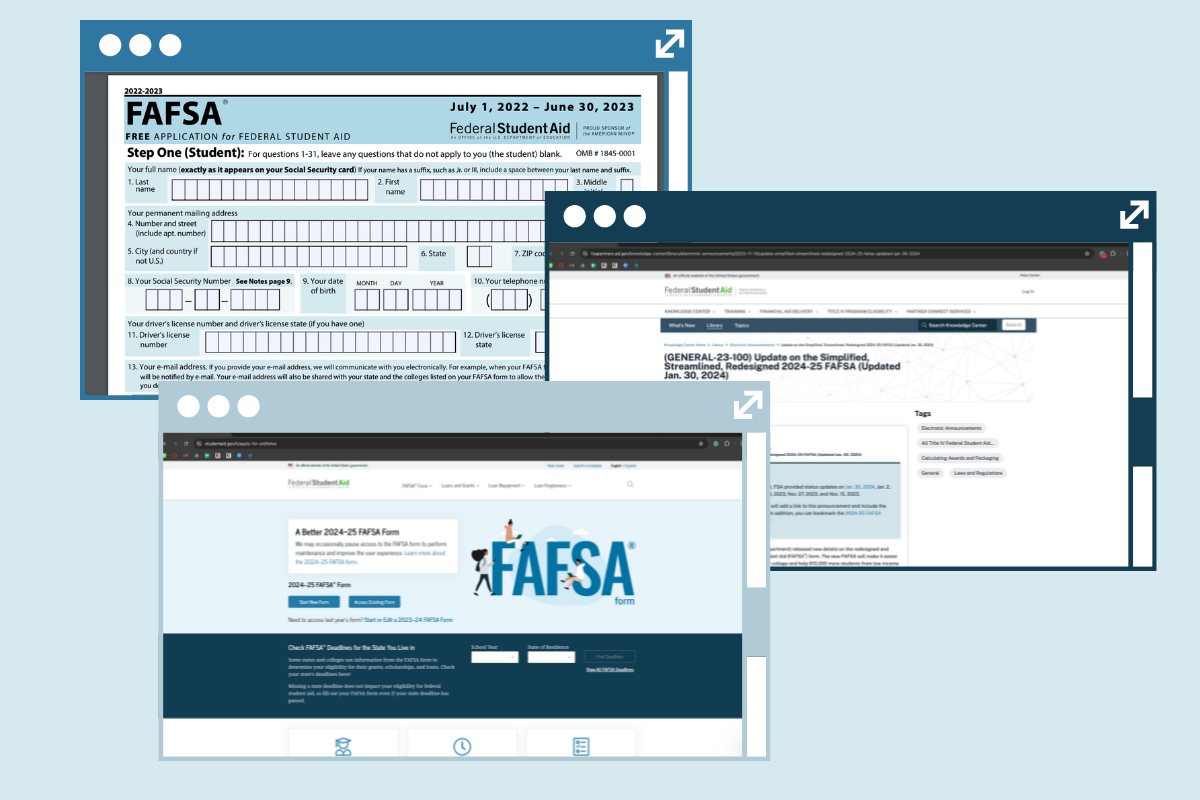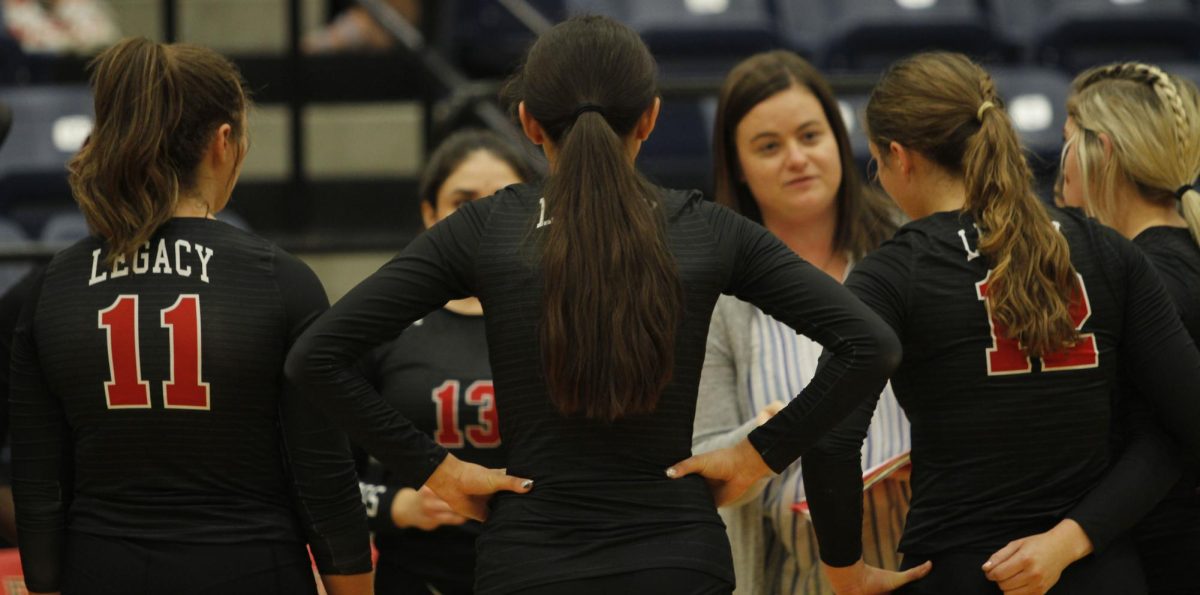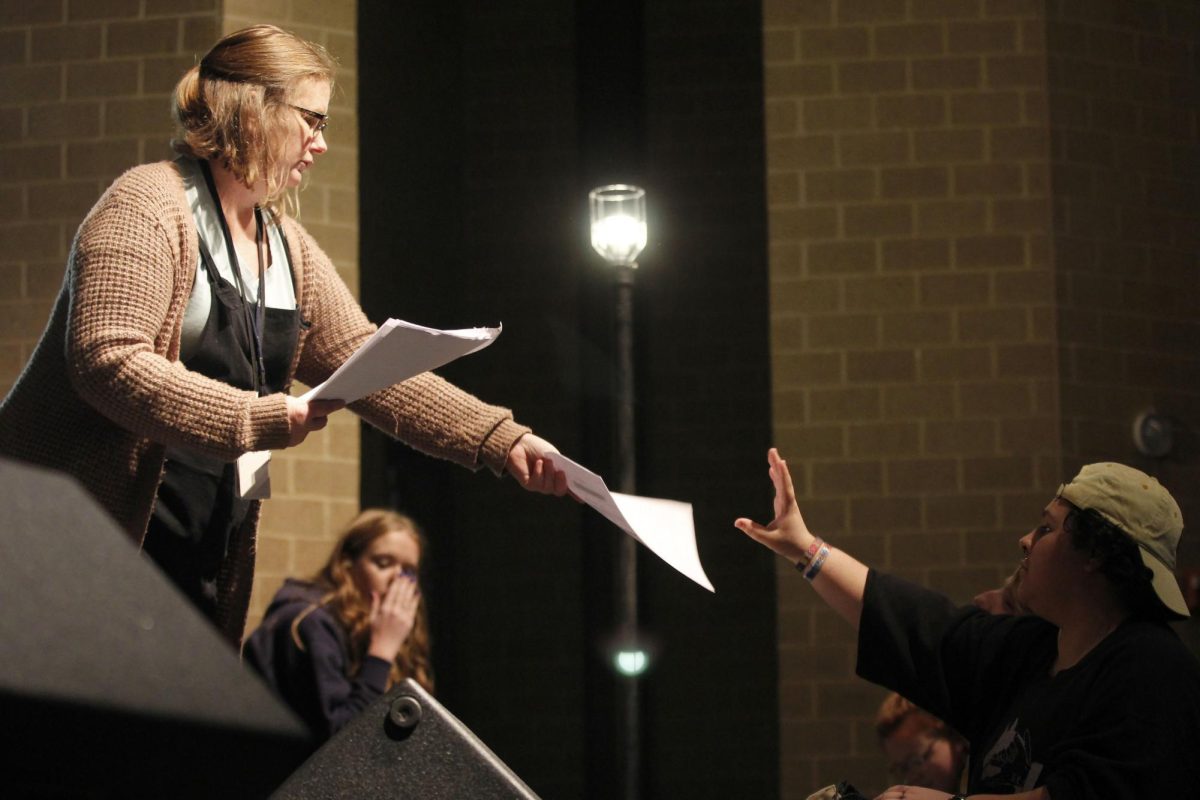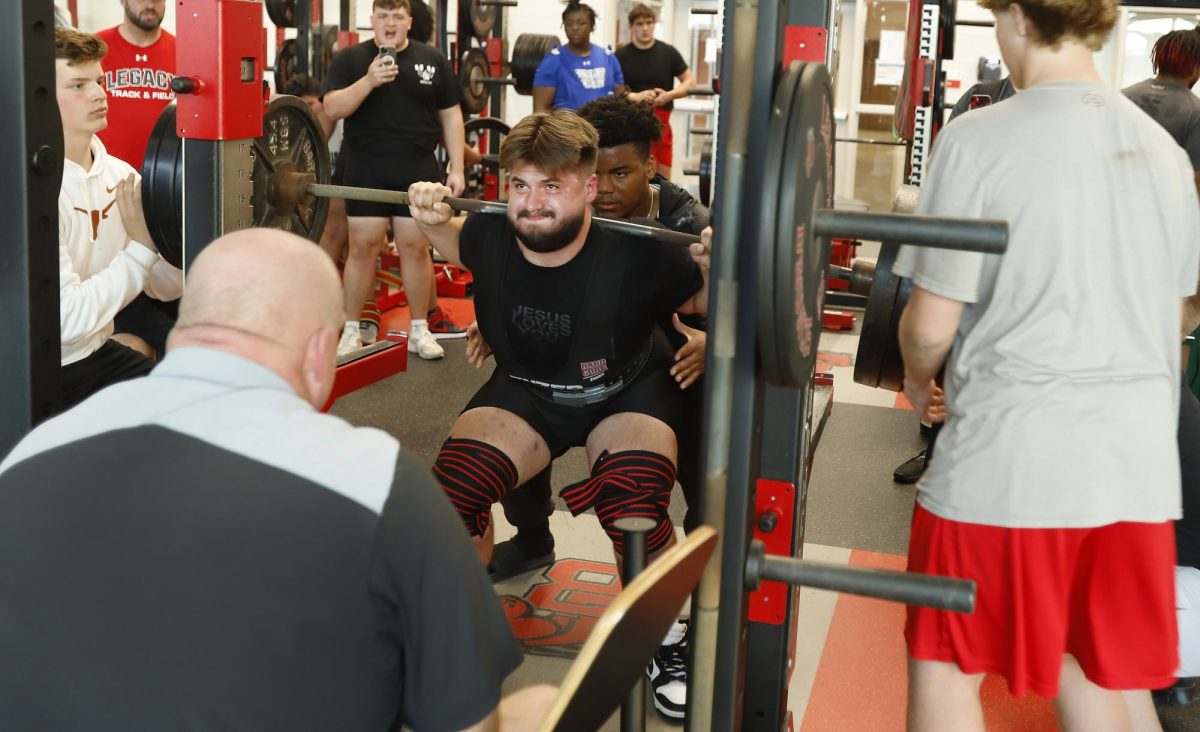Seniors graduating this year are entering higher education with some of the highest tuition prices in history. Even adjusted for inflation, the cost of tuition has increased by 355%, according to educationdata.org. Some incoming college students turn to college loans to pay for tuition, and usage of these loans comes with the added cost of interest over time. With federal and private options for student loans, it’s worthwhile to examine whether or not to pursue student loans safely.
Every student needs to fill out the FAFSA—even if you think you’re not going to qualify for something. You can also qualify for work-study that’s sent through FAFSA. So the number one thing is you need to fill out your FAFSA. — Ms. Dana Vorsino, lead counselor
Students can apply for federal student loans through the FAFSA, loans where the US Department of Education gives money to students to use for school which must be paid back over a longer period of time, with interest. There are several options for federal student loans, including need-based subsidized loans, non-need-based unsubsidized loans, and PLUS loans for expenses related to education for graduate students and parents of dependent undergraduates. Lead Counselor Ms. Dana Vorsino makes sure seniors fill out their FAFSA
“Every student needs to fill out the FAFSA—even if you think you’re not going to qualify for something. You can also qualify for work-study that’s sent through FAFSA. So the number one thing is you need to fill out your FAFSA,” Mrs. Vorsino said.
In 2019, the Texas government made completion or opt-out of a financial aid application a requirement for seniors to graduate. In accordance with this law, counselors contact all seniors about completing one of the options to fulfill the State Board of Education graduation requirements, which include filling out a FAFSA, TASFA (Texas Application for State Financial Aid), or a formal opt-out. Ms. Elizabeth Landwemeyer, Tarrant County College Student Financial Aid Services Director explains why filling out the FAFSA is important.
“The Free Application for Federal Student Aid or FAFSA is an application that we highly recommend for all students and in Texas, it’s actually required for you to graduate; the State of Texas made it a graduation requirement last year. The FAFSA determines your eligibility for all federal loans. All federal grants, all state grants, work-study, and even a lot of scholarships,” Mrs. Landwermeyer said.
Undergraduate students can borrow between $5,500 and $12,500 a year, which, with scholarships, should be enough to cover in-state tuition at a state school like University of Texas at Arlington. Because private schools are significantly more expensive, paying tuition for them may require additional scholarships or private loans. Interest rates for subsidized and unsubsidized undergraduate loans are currently 4.99%, whereas interest rates for private loans range from 4.49%-15.99%, depending on the lender and amount borrowed. The primary concern in taking out student loans is the inability to pay back said loans with interest. Most state schools prefer their students to take federal loans.
“The Federal Direct Student Loan, sometimes called the William D. Ford direct loan, is the loan that’s offered here at Tarrant County College. It’s a government loan—the federal government is lending the money, versus a private loan [where] you would go through a bank or a lender or credit union,” Ms. Landwermeyer said. “There are some schools that offer loans, but the federal loans are backed by the federal government. The federal government is lending the money and then when you graduate or drop below half-time, you start making payments back to the government. There’s more guarantees when it comes to federal loans versus a private loan.”
There are also need-based loans available, known as Pell grants. Schools determine whether or not students are eligible for Pell grants through the completion of a FAFSA. For the 23-24 academic year, the maximum award is $7,395 for students with no expected family contribution and going to a school where the cost of attendance is expected to be more than $7,395 per academic year. The total amount given in a Pell grant is determined by three criteria: expected family contribution, cost of attendance per academic year, and the number of credit hours being taken. For instance, if a student takes classes three-quarter-time, rather than full-time, they would get less assistance from a Pell grant.
“So when a student completes the FAFSA, the FAFSA determines the student’s eligibility for the federal grants, state grants, work-study loans, and even some scholarships. The Federal Pell Grant is maybe one that you’ve heard of. That’s the largest program that we have at Tarrant County College,” Ms. Landwermeyer said. “It can be anywhere from zero to almost $6,500 a year [and] can be even higher than that if a student attends in the summer. So you’re looking at almost $10,000 a year in free grant money. In addition to the Federal Pell Grant, there are state grants that we offer that range anywhere from zero to $1,600 per term.”
The most important piece of advice that this article can give is to only borrow as much as can be reasonably paid back. Loans are not blank checks, and although private companies may entice consumers with offers of no paybacks for years, interest will only continue to rise.
“You don’t have to take everything that they offer, so only take what you need. A lot of times, they offer you more—like, if you’re going to TCC and you’re going to live at home and let’s say they offer you $5,000 a semester, but it’s only going to cost $2,000. Only take out what you need, because once you take out those loans, interest starts accruing,” Ms. Vorsino said.








